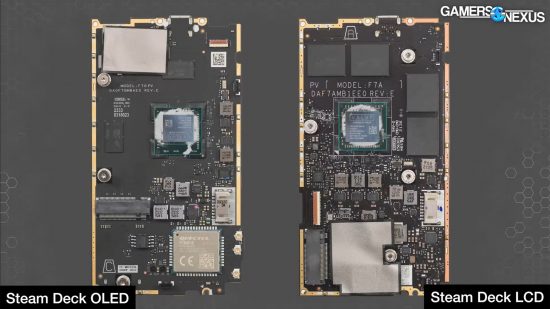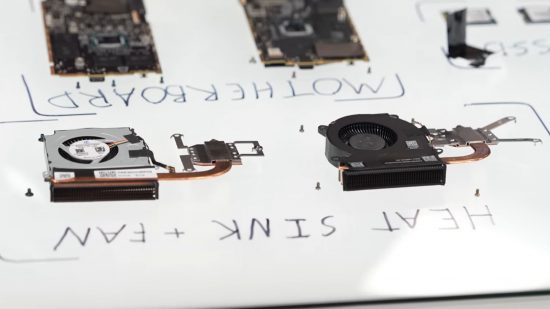It’s no secret that the new Steam Deck OLED has more changes under its hood than just a new screen. However, the extent to which the device has been changed and the impact that could have on performance wasn’t necessarily so clear. However, a new Steam Deck OLED teardown has revealed all, including major enhancements to cooling and a generally far cleaner design.
The new Steam Deck OLED teardown comes via tech YouTubers GamersNexus, who tore the device apart and made detailed comparisons between the new device and the original Steam Deck. While some of the discoveries were expected – such as the AMD chip at the heart of the device being slightly smaller due to a move from a 7nm to a 6nm manufacturing process – many others very much weren’t.

Among the most obvious and impactful changes is that the memory chips have been changed. Previously there were four quite large memory chips spread around the circuitboard but now there are just two much smaller chips. The orientation of the chips has changed too, in accordance with the main AMD APU having also been rotated 90 degrees.
As a result, the Steam Deck OLED has a much clearer path for air to flow through the device and keep it cool. This effect has been enhanced by some of the power-delivery components also having been moved from a central position on the circuitboard to the edges, where it’s quicker and easier for the cooling system to blow heat from these components straight from the system – rather than having it dissipate throughout the device.

Many other smaller components have also been removed thanks to Valve working on refining the overall design, removing the need for so many devices for functions such as stabilizing power delivery. Not only does this reduce manufacturing costs of the device – potentially moving Valve into profitability on manufacturing these things – but it also helps reduce heat output.
While many other changes are noted in GamersNexus’ video, the final most notable one is that the main fan/cooler has changed too. The fan has actually been flipped around so that it pulls more air through from the front of the Deck, rather than from the motherboard side. The thickness of the stack of cooling fins has also increased.

The combined effect of all these changes should be that the cooling system spends less effort cooling the whole device but rather it can concentrate on just wicking away heat from the AMD APU. This in turn could allow for slightly higher clock speeds for any given situation all while reducing fan noise.
Check out our Steam Deck OLED review to see how this theory holds up following our testing. Don’t forget, you can check out our lists of the best Steam Deck games and best Steam Deck accessories for our current picks of the best ways to get the most from your Steam Deck.
